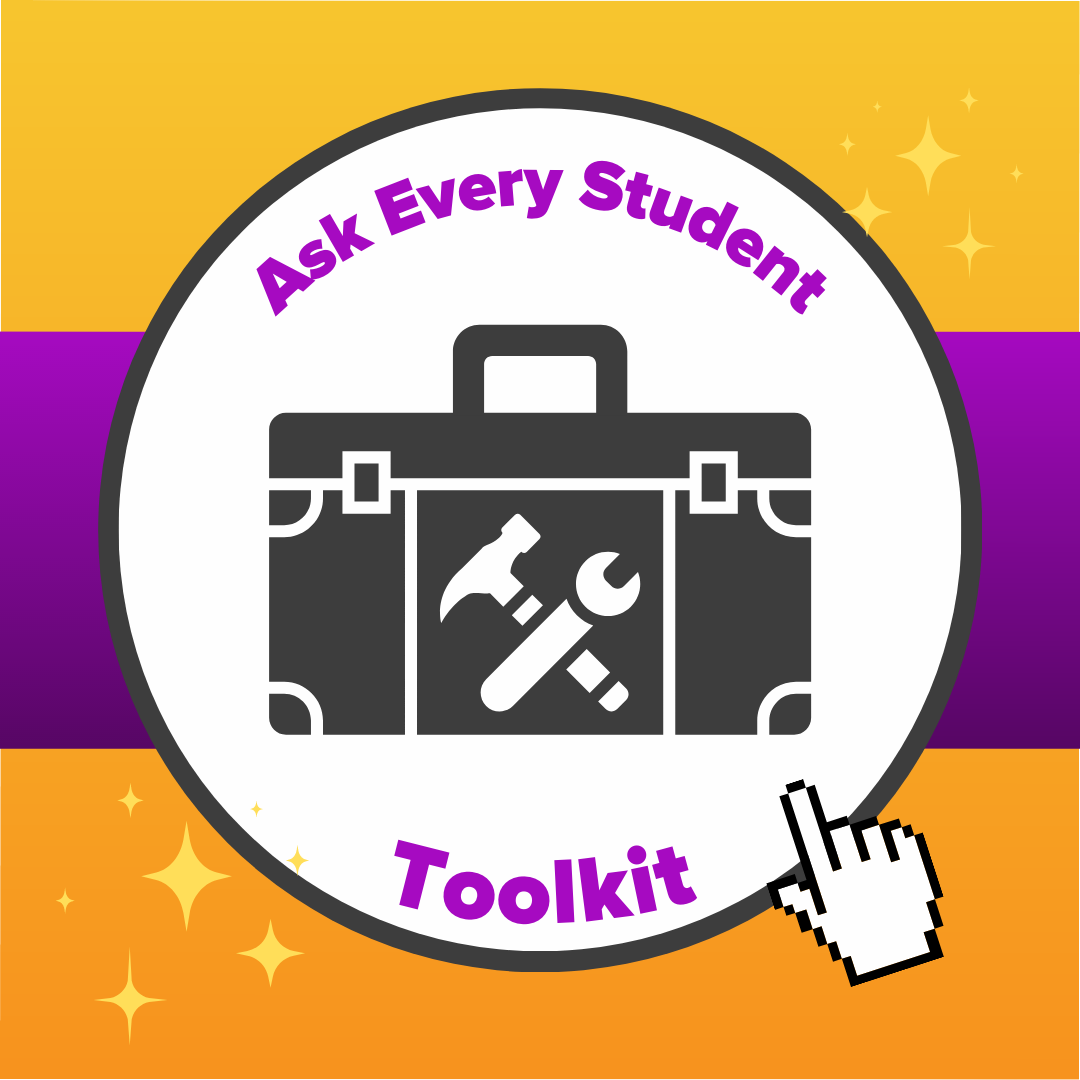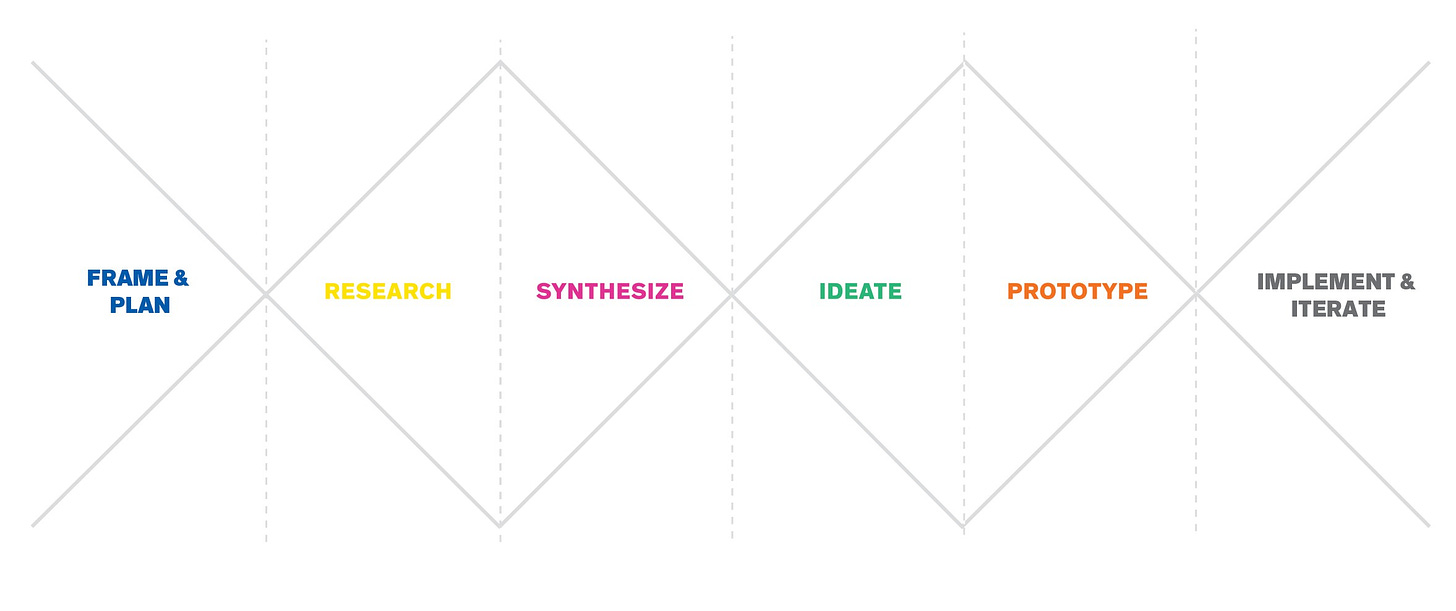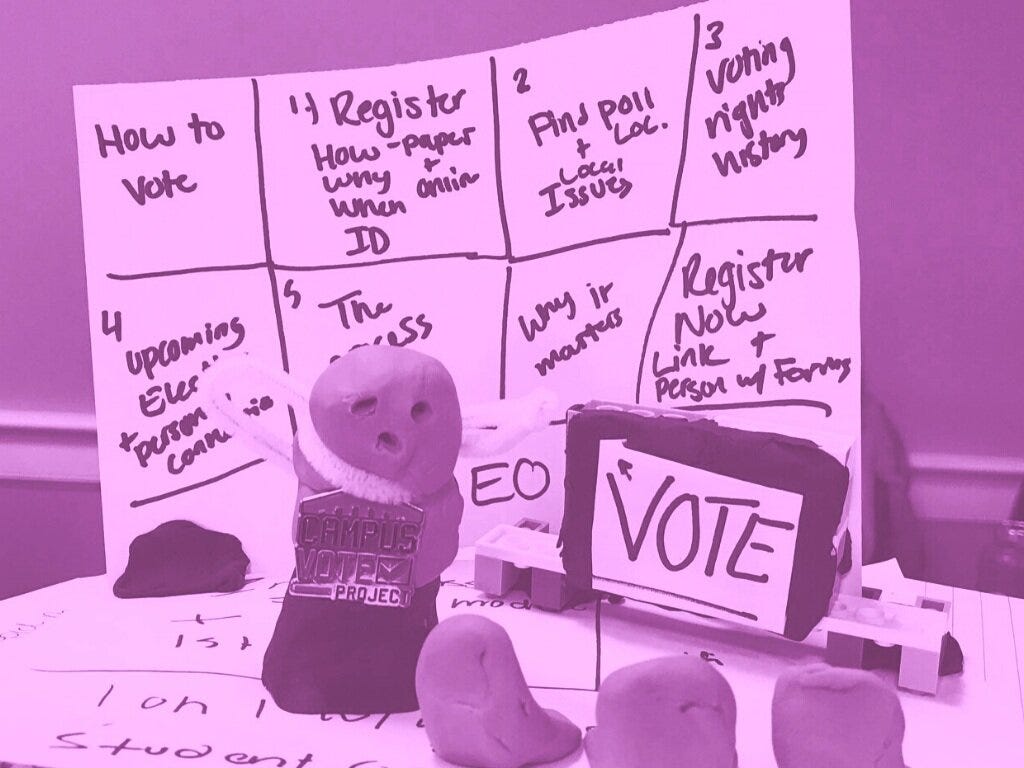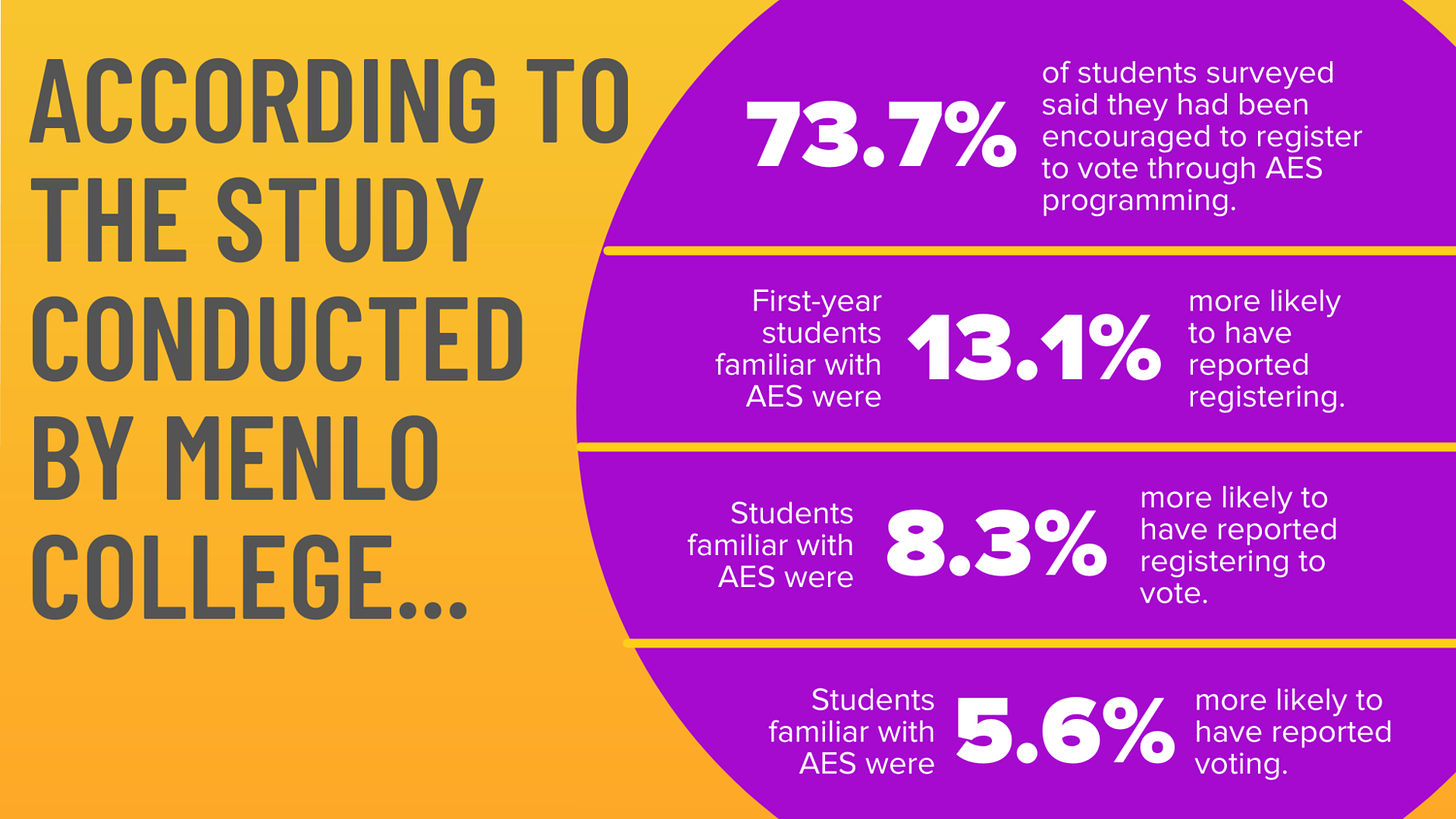how do we turn research into innovation at scale?
To achieve 100% student voting we must translate research insights into innovative tactics that can work in a huge range of contexts. Political science is only part of the answer.
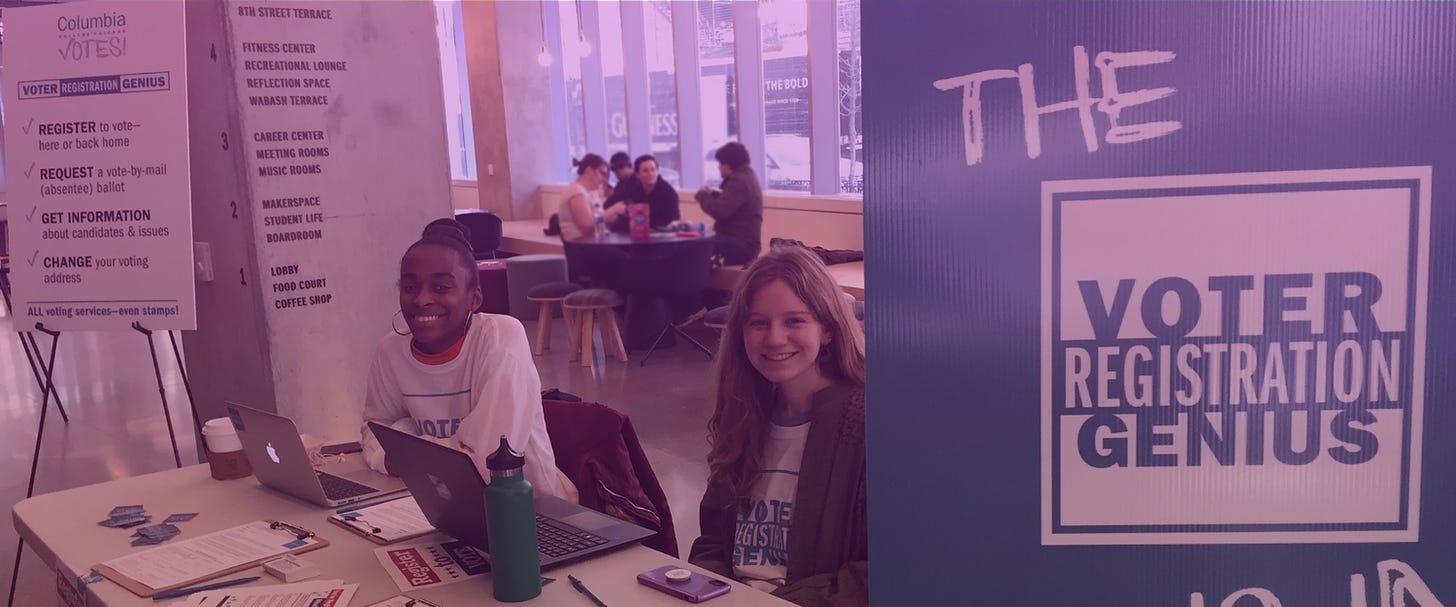
Millions of votes are on the line this month as students enroll for the fall semester at institutions across the country. Will local grassroots leaders have the effective strategies and resources they need to help every student at their institution get registered and ready to vote? Or will millions of student voters fall through the cracks, disenfranchised by systems that don’t meet their needs and a sense that our democracy doesn’t need or value their voice?
Research can play an essential role in making grassroots leaders successful in their efforts to achieve 100% student voting. But how does the process of turning research into innovation actually work? How does knowledge about student voting coming from a wide range of experts from different fields and institutions get translated into working knowledge that local grassroots leaders can learn about and use at every college in our network from Adam State University to York College of Pennsylvania and everywhere in between?
Yesterday, the Ask Every Student initiative released its 2022 Toolkit. This Toolkit is the result of extensive collective knowledge building and innovation. It includes more than 30 new campus-created tools. The Toolkit includes updated strategies for colleges and universities to use to ask every student to vote through their academic experiences in the classroom, student life processes like orientation or bus/parking pass pick-up, elevating student leadership and voice in all programs, and institutionalizing these efforts so they happen every year.
The Ask Every Student Toolkit reflects the sustained contributions of a diverse and deliberately selected group of co-designers from 20 colleges across the country as well as our 14 steering committee and partner organizations. More than 250 colleges and universities associated with the Ask Every Student design community will be using these tools in diverse contexts this fall.
Research insights have shaped and driven Ask Every Student from the beginning. Hundreds of thousands of students will receive more effective and research-driven support as they get registered and ready to vote this fall as a result of this initiative and the research that informed it. With the 2022 Toolkit in the field, we want to share with the Student Vote Research Network community how specific research insights and diverse types of knowledge influenced the direction of Ask Every Student at key moments. In sharing how scholars and research have strengthened our movement for 100% student voter participation we hope this story can illuminate the process of research translation for scholars and suggest ways we might work together even more closely to turn research into innovation at scale.
1. Population-level data suggests a big opportunity
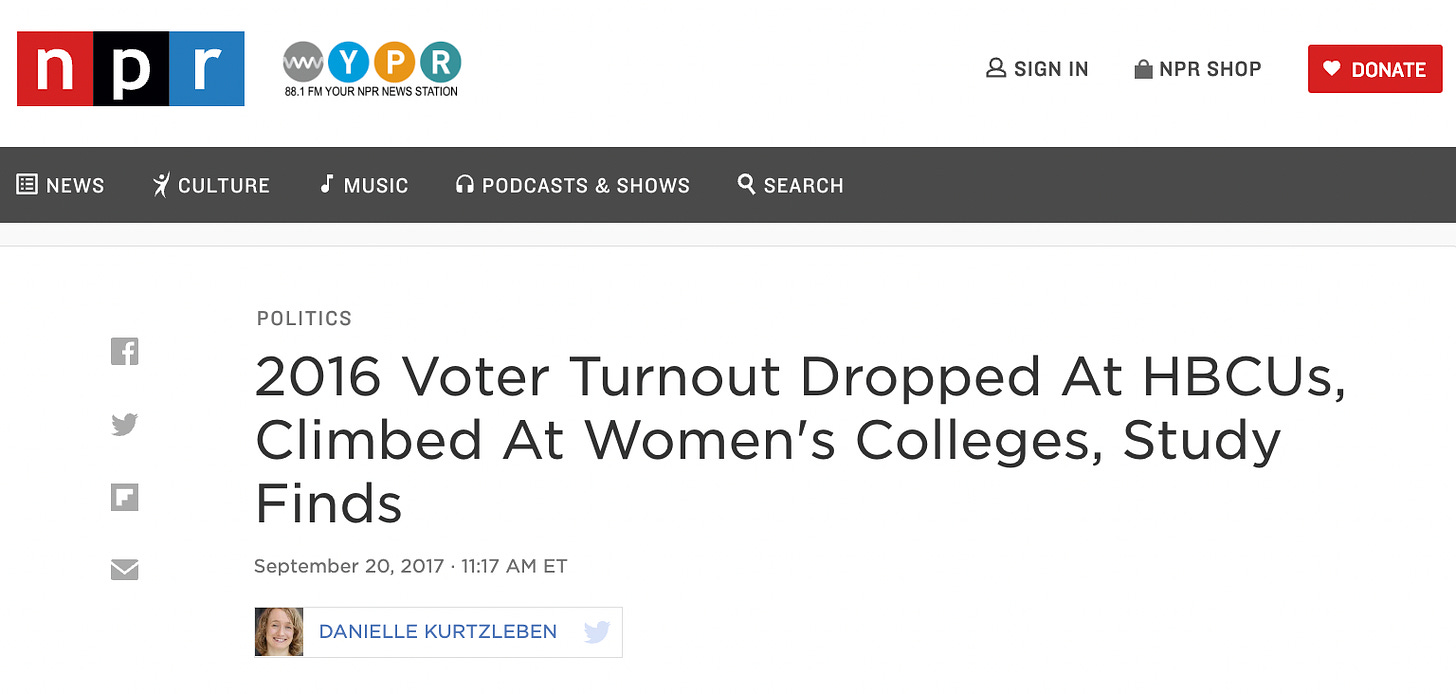
Tufts University’s Institute for Democracy & Higher Education 2016 National Study of Learning, Voting, and Engagement (NSLVE) report didn’t have very much good news. More than half of the college students in the study, which includes nearly half of all college students in the country, didn’t vote. Black student turnout dropped by five percent.
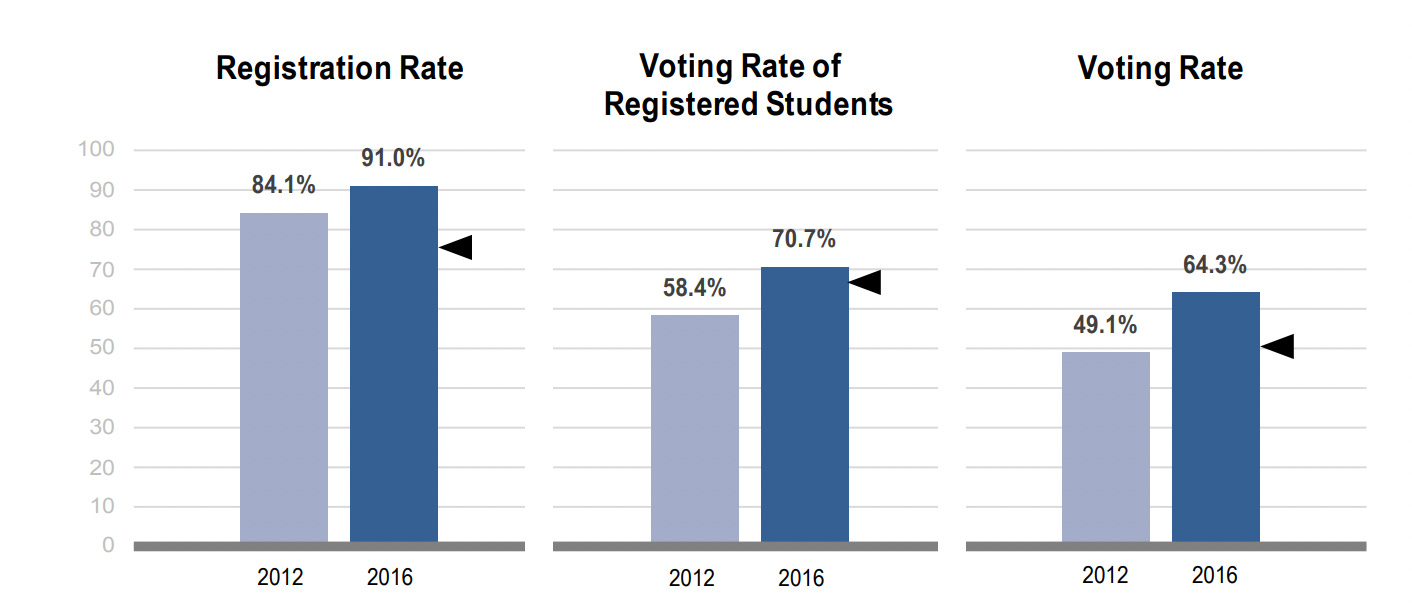
But many leaders in the movement for 100% student voting noticed a silver lining in the data. There was a huge variation in turnout and registration rates even among similar institutions, particularly around voter registration with some institutions achieving over 90% registration rates. These included large institutions that in some cases were just a few hundred registrations away from a 100% voter registration rate. As a movement focused on 100% student voter participation, these outliers were a tantalizing source of hope. Seeing some campuses achieve voter registration rates of over 90% proved that 100% student voting was possible.
This population-level data from the heroic scholars at the Institute for Democracy and Higher Education at Tisch College told us something special was happening at these campuses. We just had to learn what they were doing right and figure out how to adapt it in more contexts.
2. Elevating community knowledge with case studies
The population-level data from NSLVE told us something really impactful was happening on some campuses. But we needed to really listen to the experience of the grassroots leaders on the ground and synthesize what we heard to really understand what was happening. The first phase of this exploration consisted of a series of 19 informational interviews with campus partners that led to an Insights Brief produced by a group of nonprofit organizations and campuses that at the time in 2019 was called the National Resource Consortium on Full Student Voter Participation. (We didn’t need a focus group to inform us that this effort needed a shorter and catchier name!)
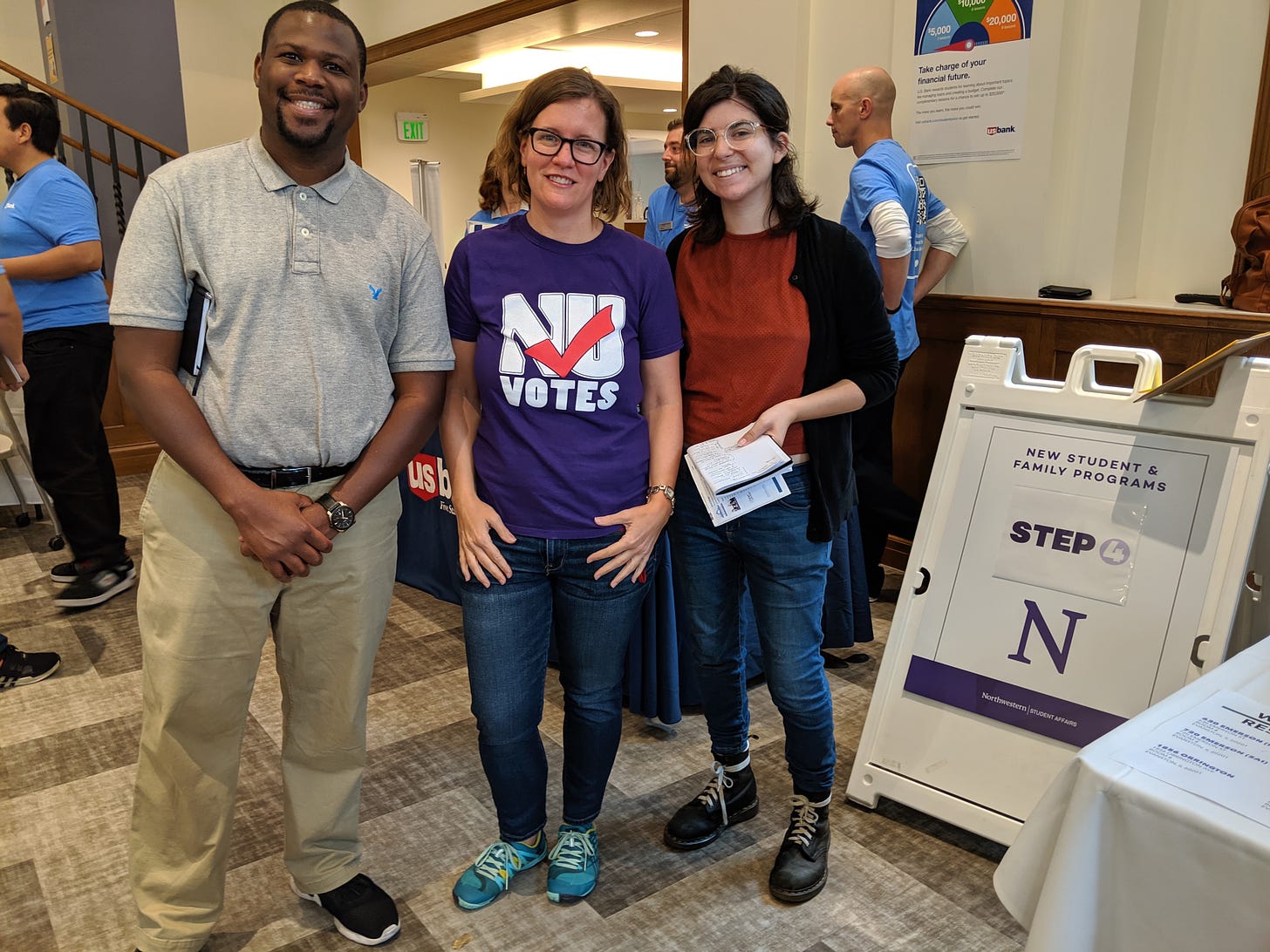
These informational interviews gleaned a number of eye-opening principles employed by these campuses with high registration rates, including:
Voter registration should be integrated, systematic, and comprehensive.
Campus representatives should talk with every student individually about registering to vote and voting.
Those registering students should respect and support student preferences on where and how to vote.
With the data from NSLVE pointing the way, we were able to discover and synthesize important insights that were already present in our network. Now we needed to turn these insights into flexible working knowledge for local grassroots leaders operating in all campus contexts.
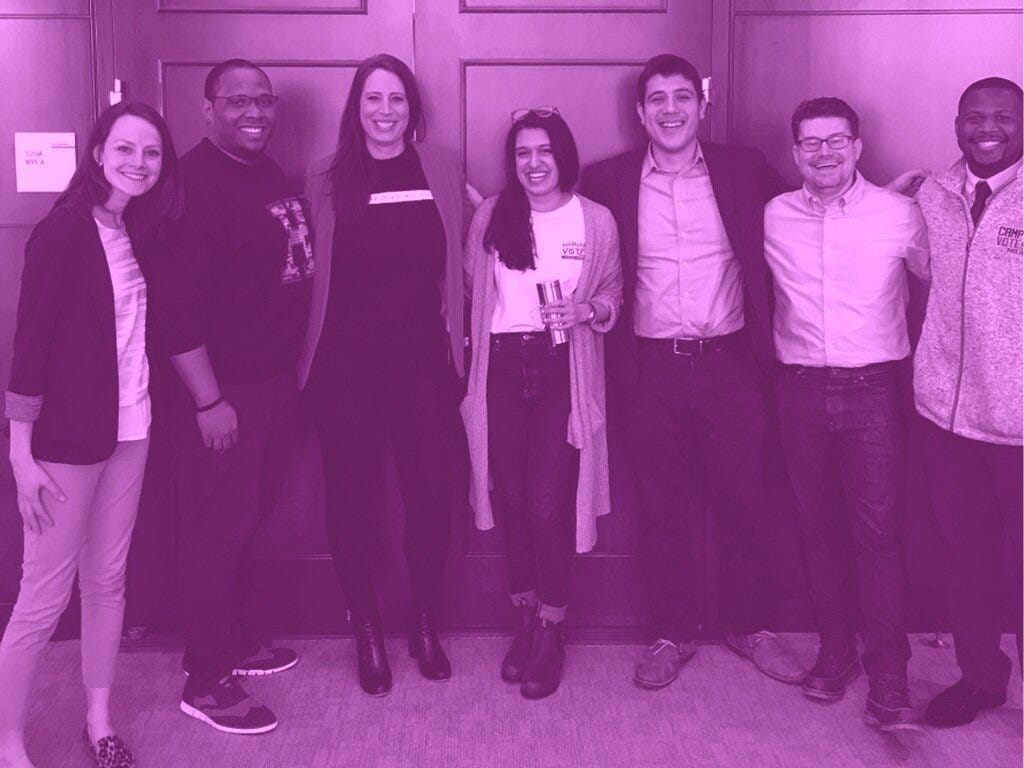
Following the development of this Insights Brief, the Students Learn Students Vote (SLSV) Coalition and the ALL IN Campus Democracy Challenge joined founding members NASPA and the Campus Vote Project in early 2020 to establish the initiative now known as Ask Every Student.
3. Human-centered design turns insights into tools
In order to start applying these insights, we engaged scholars with experience in human-centered design at the Maryland Institute College of Art. These scholars supported us in translating our new knowledge into useful tools that local grassroots leaders could apply in their own contexts.
Working with a diverse group of co-designers, we were able to develop a wide range of new tools to help campuses apply these tools in different contexts. Throughout 2020, 174 colleges and universities participated in Ask Every Student by integrating strategies to ask every student on their campuses to register to vote into existing campus systems and processes.
In the new Toolkit, we’ve taken steps to guide users through Human-Centered Design principles to identify the strategies and tactics that best meet the needs of their specific student and faculty populations, with the end goal of integrating meaningful, inclusive democratic engagement and voter registration processes into every aspect of campus culture.
4. Evaluating impact with political scientists
At the end of the 2020 election, we knew this initiative needed yet another kind of expert and scholarly support from political scientists. Now that 174 campuses were using tools that when applied ask every student, we wanted to see what kind of impact these grassroots leaders were having with these strategies. How many students were they reaching? Were students voting as a result of AES strategies who would not have voted otherwise? What students still got left behind even when their campus took extraordinary measures to ask every student to get registered and ready to vote?
A study by Team Michelson of more than 2,200 students at 14 AES campuses sought to learn more about the initiative’s impact on student voting and voting registration rates. The results were extraordinary, showing a significant and measurable impact on student registration and voting rates. Focus groups also found that AES’ impact goes beyond the institution, with students often sharing information learned through AES-driven on-campus tactics to help off-campus family members register to vote.
Dr. Michelson’s research was invaluable in informing the further development of the Ask Every Student Toolkit and the work of the 24 AES Codesigners, a diverse group of student, faculty, and campus staff leaders from across the country who collaboratively designed innovative tools and resources for other campuses to use to implement strategies that ask every student at their institution to participate in the democratic process.
Conclusion: Building a virtuous cycle of learning
Political science research has played an essential role in the success of Ask Every Student. But our experience has been that it has been much more effective because we were able to put new insights from political scientists into conversation with other forms of knowledge coming from our grassroots partners, experts in social design, and scholars in other fields like education.
It’s through the virtuous cycle of research informing practice and practice informing research that the Ask Every Student Toolkit has arrived at the level of sophistication that it is today. Hundreds of colleges and universities across the country now have access to these evidence-backed and campus-driven full participation strategies.
If you are interested in helping ensure campus leaders know about these resources or in evaluating the effectiveness of the tactics in the AES Toolkit, please reach out to us! We’d love to connect with you, and we have no intentions of having the 2022 AES Toolkit be the final version. We need each of you to help us continue learning, iterating, and scaling so that we truly do one day reach full student voter participation.
Clarissa Unger is co-founder and Executive Director of the SLSV Coalition.
Maddie Wolf is the Resources and Campus Support Manager for the SLSV Coalition and a steering committee member for the Ask Every Student Initiative.




